The nervous system is a complex network that transmits signals between the brain and the body. It includes the brain, spinal cord, and various nerves.
Disorders of the nervous system can disrupt these signals, affecting movement, sensation, and even thought processes. Understanding these disorders helps us recognize their causes, symptoms, and treatments.
I. Understanding the Nervous System
The nervous system is divided into two main parts. This is the central nervous system (CNS) and the peripheral nervous system (PNS).
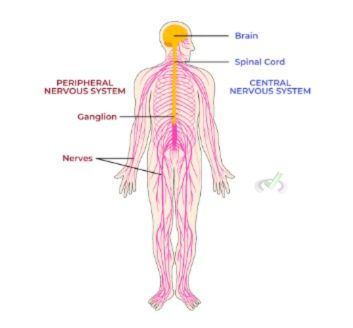
Central Nervous System (CNS)
The CNS is composed of the brain and spinal cord. It is the body's control center, processing information and directing responses.
- Brain: The brain controls everything from breathing to thinking. Different parts of the brain have specific roles. For instance, our frontal lobe is involved in decision-making and problem-solving. On the other hand, the cerebellum helps with balance and coordination.
- Spinal Cord: The spinal cord runs from the brain down the back and acts as a communication highway. It transmits signals between the brain and the rest of the body. It also controls reflex actions, like pulling your hand away from a hot stove.
Peripheral Nervous System (PNS)
The PNS connects the CNS to the limbs and organs. It has two main parts: the somatic and autonomic nervous systems.
- Somatic Nervous System: This system controls voluntary movements, like waving your hand. It uses sensory neurons to send information to the brain and motor neurons to carry out actions.
- Autonomic Nervous System: This system manages involuntary functions, like heartbeat and digestion. It includes:
- Sympathetic Nervous System: This system prepares the body for "fight or flight" during stress. It increases heart rate and dilates pupils.
- Parasympathetic Nervous System: This system calms the body down after a stressful situation, slowing the heart rate and promoting digestion.
II. Major Disorders of the Nervous System
Disorders of the nervous system can arise from genetics, injuries, infections, or other factors.
Neurodegenerative Disorders
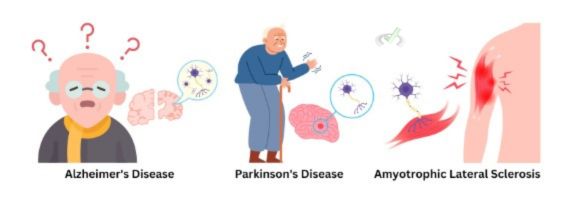
These disorders involve the gradual loss of nerve cells, affecting brain and body functions.
- Alzheimer's Disease: Affects memory and cognitive skills. It is linked to the buildup of abnormal proteins known as beta-amyloid plaques and tau tangles, which damage brain cells.
- Parkinson's Disease: Impacts movement, causing symptoms like tremors and stiffness. It results from diminished dopamine-producing neurons, which are crucial for controlling movement.
- Amyotrophic Lateral Sclerosis (ALS): Also known as Lou Gehrig's disease, ALS leads to the degeneration of motor neurons, causing muscle weakness and paralysis.
Demyelinating Disorders
These disorders damage the myelin sheath, which protects nerve fibers and helps signal transmission.
- Multiple Sclerosis (MS): The immune system attacks the myelin sheath, disrupting communication between the brain and body. MS can cause symptoms like fatigue, numbness, and coordination problems. It can occur in different forms, such as relapsing-remitting and primary progressive MS.
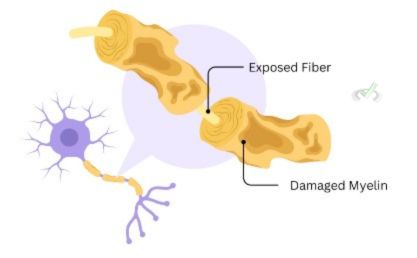
Infectious Disorders
These disorders are caused by infections that target the nervous system.
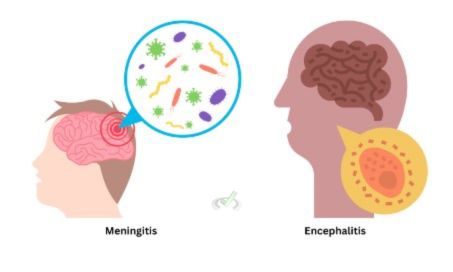
- Meningitis: Inflammation of the protective membranes that cover the brain and spinal cord, called meninges. Bacteria, viruses, or fungi can cause it. Bacterial meningitis can be severe and requires urgent treatment.
- Encephalitis: Inflammation of the brain that is often caused by viral infections, such as the herpes simplex virus or West Nile virus. Symptoms include fever, headache, and confusion.
Genetic and Congenital Disorders
These disorders are present from birth and can be inherited or result from developmental issues
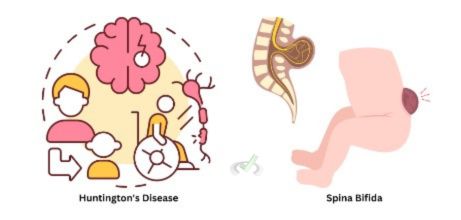
- Huntington's Disease: A genetic disorder causing the progressive breakdown of nerve cells in the brain. It leads to uncontrolled movements, emotional problems, and cognitive decline. A mutation in the HTT gene causes it.
- Spina Bifida: A birth defect where the spinal cord does not develop properly. It can cause physical disabilities and neurological problems. The severity varies depending on the type of spina bifida.
Neurological Injuries
Injuries to the nervous system can cause permanent damage.
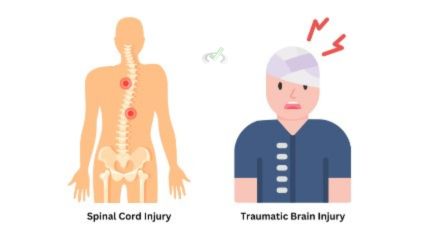
- Spinal Cord Injury: A damage to the spinal cord that leads to partial or complete loss of function below the injury site. Depending on the level of injury, this might result in paralysis.
- Traumatic Brain Injury (TBI): A brain injury caused by a blow or jolt to the head. TBIs can be mild, such as concussion, or severe, leading to long-term cognitive and physical impairments.
III. Symptoms and Diagnosis
Symptoms of nervous system disorders can vary greatly depending on the disorder and the part of the system affected.
Common Symptoms
- Cognitive Changes: Issues with memory, thinking, and decision-making are common in Alzheimer's.
- Motor Symptoms: Problems with movement, such as tremors in Parkinson's disease or weakness in ALS.
- Sensory Symptoms: Changes in sensation, such as numbness or tingling, are often seen in MS.
- Emotional Symptoms: Mood changes, such as depression or anxiety, which can occur in many neurological disorders.
Diagnosis
Diagnosing nervous system disorders often requires multiple approaches.
- Imaging Tests: MRI and CT scans provide very detailed images of the human brain and spinal cord, helping to identify abnormalities like tumors or lesions.
- Electrophysiological Tests: EEGs measure electrical activity in the brain, helpful in diagnosing conditions like epilepsy. Nerve conduction studies assess how quickly nerves transmit signals, which can help diagnose conditions like carpal tunnel syndrome.
- Laboratory Tests: Blood tests or cerebrospinal fluid analysis (through lumbar puncture) can detect infections, inflammation, or genetic disease markers.
IV. Treatment and Management
Treatment varies widely based on the specific disorder and its severity.
Medications
- Neurotransmitter Modulators: Drugs like levodopa increase dopamine levels in Parkinson's disease, improving movement.
- Immunosuppressants: Medications like corticosteroids reduce immune system activity in conditions like MS, helping to manage symptoms.
- Antibiotics and Antivirals: These treat infections like bacterial meningitis or viral encephalitis.
Physical and Occupational Therapy
These therapies help patients regain function and adapt to changes in their abilities. For instance, physical therapy can improve mobility in patients with MS. On the other hand, occupational therapy helps them perform daily tasks more easily.
Surgery
Surgical interventions can be necessary to treat some conditions. For example, deep brain stimulation (DBS) can help reduce symptoms of Parkinson's disease. It does this by regulating abnormal brain activity.
Lifestyle Changes and Support
- Diet and Exercise: A healthy lifestyle can support overall well-being and help manage symptoms. For example, a healthy diet and regular exercise can improve strength and energy levels.
- Psychological Support: Counseling and support groups provide support and coping strategies for patients and their families.
V. Bridge/Overlap
Understanding the biology of nervous system disorders extends into other fields and topics.
Psychiatry
Many neurological disorders have psychiatric components. For instance, depression and anxiety are common in patients with chronic neurological conditions. Psychiatrists help manage these aspects with therapy and medications.
Biotechnology
Advancements in technology, like gene therapy and neural implants, are opening new treatment possibilities for nervous system disorders. For example, gene therapy is being explored for genetic conditions like Huntington's disease.
Health Policy
Government policies are crucial in funding research and providing care for individuals with neurological disorders. Public health campaigns can also educate the public on the prevention and early detection of these conditions.
Neuroplasticity
Neuroplasticity is the brain's ability to reorganize and form new neural connections. This is crucial in recovery from injuries, such as stroke, where the brain can adapt to lost functions by rerouting processes
Preventive Measures
Preventive care, such as vaccinations against infections that can cause neurological damage (e.g., meningitis), is essential. Promoting safe practices to prevent head injuries is also vital to public health efforts.
VI. Wrap Up/Key Terms
Let’s summarize the key points:
- Central Nervous System (CNS): This includes the brain and spinal cord and controls most body and mind functions.
- Peripheral Nervous System (PNS): This system connects the CNS to the rest of the body and manages voluntary and involuntary actions.
- Neurodegenerative Disorders: Conditions like Alzheimer's, Parkinson's, and ALS involving progressive neuron loss.
- Demyelinating Disorders: Disorders like MS, where the protective covering of nerve fibers is damaged.
- Infectious Disorders: Conditions like meningitis and encephalitis are caused by pathogens attacking the nervous system.
- Genetic and Congenital Disorders: Disorders present from birth, like Huntington's disease and spina bifida.
- Neurological Injuries: Damage to the nervous system, such as TBIs or spinal cord injuries.
- Neuroplasticity: The brain's ability to reorganize and adapt following damage or change.
VII. Practice
Test your understanding with these questions:
Sample Practice Question 1
What are the two main parts of the nervous system?
A. Central Nervous System and Autonomic Nervous System
B. Brain and Peripheral Nervous System
C. Central Nervous System and Peripheral Nervous System
D. Spinal Cord and Autonomic Nervous System
Ans. C
Central Nervous System and Peripheral Nervous SystemExplanation: The CNS includes the brain and spinal cord, while the PNS connects these to the rest of the body.
Sample Practice Question 2
Which disorder is characterized by the loss of dopamine-producing neurons?
A. Alzheimer's Disease
B. Multiple Sclerosis
C. Parkinson's Disease
D. Huntington's Disease
Ans. C
Parkinson's disease involves the loss of dopamine-producing neurons, affecting movement and coordination.







 To help you achieve your goal MCAT score, we take turns hosting these
To help you achieve your goal MCAT score, we take turns hosting these 





















 reviews on TrustPilot
reviews on TrustPilot